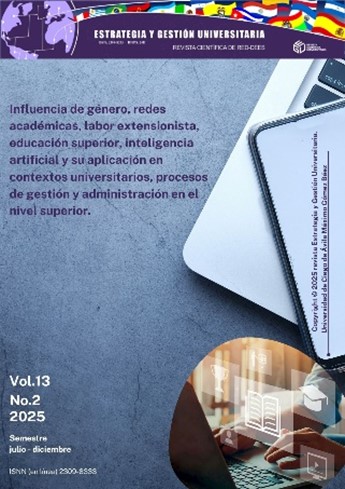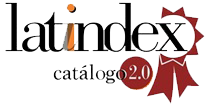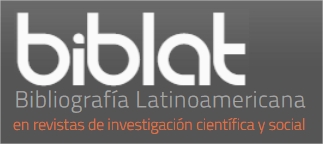Modelagem da adoção de ferramentas de inteligência artificial no ensino superior: uma abordagem baseada em TAM
DOI:
https://doi.org/10.5281/zenodo.17653760Palavras-chave:
inteligência artificial, ensino superior, adoção tecnológica, utilidade percebidaResumo
Introdução: a inteligência artificial (IA) consolidou-se como uma das tecnologias mais transformadoras no ensino superior, ao oferecer ferramentas que facilitam a personalização da aprendizagem e otimizam os processos acadêmicos e administrativos; entretanto, sua adoção depende de fatores individuais e organizacionais. Objetivo: analisar a influência da utilidade percebida, da facilidade de uso, da atitude e da intenção de uso na adoção de ferramentas de IA por estudantes universitários, por meio do Modelo de Aceitação Tecnológica (TAM). Método: foi empregado um enfoque quantitativo descritivo-correlacional, aplicando-se um questionário validado a 55 estudantes com experiência prévia em IA, e os dados foram processados por meio de correlações de Pearson e regressão múltipla. Resultados: a intenção de uso configurou-se como o preditor mais relevante do uso real (β = 0.679, p < 0.001), seguida pela utilidade percebida (β = 0.374, p = 0.024), enquanto a facilidade de uso não apresentou impacto significativo, e a atitude mostrou uma relação negativa inconclusiva. Conclusão: o modelo TAM mostrou-se pertinente para explicar a adoção de ferramentas de IA na educação superior, destacando que a utilidade percebida e a intenção de uso são os fatores determinantes para garantir uma implementação efetiva dessas tecnologias.
Downloads
Referências
Al Badi, A., Al Siyabi, N., Alsalmi, K., Al Handhali, K., Alsalmi, S., & Al-Kharusi, A. (2024). Factors affecting the use of Microsoft Teams® based on Technology Acceptance Model (TAM): Perspectives of teachers and students in higher education. In Proceedings of the 2024 8th International Conference on Digital Technology in Education (ICDTE) (pp. 13–21). Association for Computing Machinery. https://doi.org/10.1145/3696230.3696254
Al-Abdullatif, A. M. (2024). Modeling Teachers’ Acceptance of Generative Artificial Intelligence Use in Higher Education: The Role of AI Literacy, Intelligent TPACK, and Perceived Trust. Education Sciences, 14(11), 1209. https://doi.org/10.3390/educsci14111209
Amron, M. T., & Noh, N. H. M. (2021). Technology Acceptance Model (TAM) for analysing cloud computing acceptance in higher education institution (HEI). IOP Conference Series: Materials Science and Engineering, 1176(1), 012036. https://doi.org/10.1088/1757-899X/1176/1/012036
Barz, N., Benick, M., Dörrenbächer-Ulrich, L. & Perels, F. (2024). Students’ acceptance of e-learning: Extending the technology acceptance model with self-regulated learning and affinity for technology. Discovery Education, 3, 114. https://doi.org/10.1007/s44217-024-00195-7
Buana, A., & Linarti, U. (2021). Measurement of Technology Acceptance Model (TAM) in using e-learning in higher education. Jurnal Teknologi Informasi dan Pendidikan, 14(2), 165–171. https://doi.org/10.24036/tip.v14i2
Calle-Díaz, D. M., Porras-Cruz, F. L., & Santamaría-Freire, E. J. (2024). Modelo de aceptación tecnológica y la difusión de contenidos en estudiantes universitarios. MQRInvestigar, 8(4), 5685–5705. https://doi.org/10.56048/MQR20225.8.4.2024.5685-5705
Chintalapati, N., & Daruri, V. S. K. (2017). Examining the use of YouTube as a learning resource in higher education: Scale development and validation of TAM model. Telematics and Informatics, 34(6), 853–860. https://doi.org/10.1016/j.tele.2016.08.008
Contreras, F. C., & Guerrero, J. C. O. (2025). La integración de la IA en la educación superior: Una experiencia en el aprendizaje estudiantil. Revista Tribunal, 5 (11). https://doi.org/10.59659/revistatribunal.v5i11.140
Davis, F. D. (1989). Perceived usefulness, perceived ease of use, and user acceptance of information technology. MIS Quarterly, 13 (3), 319-340. https://doi.org/10.2307/249008
Fathema, N., Shannon, D., & Ross, M. (2015). Expanding the Technology Acceptance Model (TAM) to examine faculty use of learning management systems (LMSs) in higher education institutions. MERLOT Journal of Online Learning and Teaching, 11(2), 210–232. https://jolt.merlot.org/Vol11no2/Fathema_0615.pdf
Galdames, I. S. (2024). Integración de la Inteligencia Artificial en la Educación Superior: Relevancia para la Inclusión y el Aprendizaje. SciComm Report, 4(1). https://doi.org/10.32457/scr.v4i1.2487
Ibrahim, F., Münscher, J. C., Daseking, M., & Telle, N. T. (2025). The technology acceptance model and adopter type analysis in the context of artificial intelligence. Frontiers in Artificial Intelligence, 7. https://doi.org/10.3389/frai.2024.1496518
Kanont, K., Srisermbhok, A., Rungruang, P., & Boonprakob, M. (2024). Generative-AI, a learning assistant? Factors influencing higher-ed students' technology acceptance. The Electronic Journal of e-Learning, 22 (6), 18-33. https://doi.org/10.34190/ejel.22.6.3196
Morales, J. E. H. (2025). Adopción de herramientas de inteligencia artificial en la Universidad Francisco Gavidia. Realidad y Reflexión, 1 (60). https://doi.org/10.5377/ryr.v1i60.19866
Mourtajji, L., & Arts-Chiss, N. (2024). Unleashing ChatGPT: Redefining Technology Acceptance and Digital Transformation in Higher Education. Administrative Sciences, 14(12), 325. https://doi.org/10.3390/admsci14120325
Ngabiyanto, A., Nurkhin, A., Widiyanto, I. H. S., & Kholid, A. M. (2021). Teacher’s intention to use online learning: An extended technology acceptance model (TAM) investigation. Journal of Physics: Conference Series, 1783(1), 012123. https://doi.org/10.1088/1742-6596/1783/1/012123
Rosli, M. S., Saleh, N. S., Md. Ali, A., Abu Bakar, S., & Mohd Tahir, L. (2022). A Systematic Review of the Technology Acceptance Model for the Sustainability of Higher Education during the COVID-19 Pandemic and Identified Research Gaps. Sustainability, 14(18), 11389. https://doi.org/10.3390/su141811389
Sergeeva, O. V., Zheltukhina, M. R., Shoustikova, T., Tukhvatullina, L. R., Dobrokhotov, D. A., & Kondrashev, S. V. (2025). Understanding higher education students' adoption of generative AI technologies: An empirical investigation using UTAUT2. Contemporary Educational Technology, 17 (2), ep571. https://doi.org/10.30935/cedtech/16039
Sánchez-Prieto, J. C., Olmos-Migueláñez, S., & García-Peñalvo, F. J. (2016). Do Mobile Technologies Have a Place in Universities?: The TAM Model in Higher Education. In L. Briz-Ponce, J. Juanes-Méndez, & F. García-Peñalvo (Eds.), Handbook of Research on Mobile Devices and Applications in Higher Education Settings (pp. 25-52). IGI Global Scientific Publishing. https://doi.org/10.4018/978-1-5225-0256-2.ch002
Vanduhe, V. Z., Nat, M., & Hasan, H. F. (2020). Continuance intentions to use gamification for training in higher education: Integrating the Technology Acceptance Model (TAM), social motivation, and Task Technology Fit (TTF). IEEE Access, 8, 21473–21484. https://doi.org/10.1109/ACCESS.2020.2966179
Venkatesh, V., Morris, M. G., Davis, G. B., & Davis, F. D. (2003). User acceptance of information technology: Toward a unified view. MIS Quarterly, 27 (3), 425-478. https://doi.org/10.2307/30036540
Widodo, D. S., Rachmawati, D., Wijaya, H., Maghfuriyah, A., & Udriya, U. (2024). AI adoption in higher education institution: An integrated TAM and TOE model. Dinasti International Journal of Education Management and Social Science, 6 (2), 1029-1039. https://doi.org/10.38035/dijemss.v6i2.3645
Yong, L. A., Rivas Tovar, L. A., & Chaparro, J. (2010). Modelo de aceptación tecnológica (TAM): un estudio de la influencia de la cultura nacional y del perfil del usuario en el uso de las TIC. Innovar, 20(36), 187-203. http://www.scielo.org.co/scielo.php?script=sci_arttext&pid=S0121-50512010000100014&lng=en&tlng=es
Zambrano Vera, D. A., Castelo Naveda, M. del C., Zambrano Solís, M. J., & Vinocunga Pillajo, R. D. (2024). Adopción de Inteligencia Artificial Generativa en el ámbito educativo: Aplicación del Modelo de Aceptación Tecnológica. Polo del Conocimiento, 9 (12), 1983-1996. https://doi.org/10.1007/s10639-023-11816-3
Downloads
Publicado
Como Citar
Edição
Seção
Licença
Copyright (c) 2025 Estrategia y Gestión Universitaria

Este trabalho está licenciado sob uma licença Creative Commons Attribution-NonCommercial-ShareAlike 4.0 International License.






















